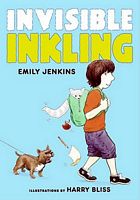Whether you write scary stories or you just want to create a strong emotional experience for your reader, your character is likely to be afraid or anxious at some point in your story. What do children’s writers need to know about fear?
Fears are different at different ages. The things that terrify a 5-year-old (e.g., loud noises, imaginary creatures) may be different than what scares an 8 to- 12-year old. Some common fears for middle grader readers include:
- nightmares or scary dreams
- violent weather, like tornados or hurricanes
- death
- war and terrorism
- speaking in front of a group
- someone breaking into the house
- being late for school or class
- divorce
Not all fears have the same intensity. Fearful reactions are linked to personality and past experiences. One kid might be only a little anxious about starting a new school while another might be really scared. Think about what past experiences your character might have had to create or develop the fear.
Fears can be unique. Even though some fears are common to many, some children have a specific, unusual fear that continues through childhood. For example, someone I know was afraid of automatic flush toilets for most of his childhood, after losing a coin in one as a young child.
Because everyone has experienced fear or anxiety at some point, including a character’s fears in your writing can help you connect with readers. Fear may also be a way to provide a flaw or problem your character needs to overcome, or to increase the tension in your story.
Some tips for including fear:
Show fear through actions. Behaviour is a big giveaway to fear, but beware of too much emphasis on physical reactions (there are only so many times a character can feel their heart pounding). In the real world, we often gauge our reactions through how other people react. If your secondary or minor characters act afraid, that can add to the reader’s fear for the main character.
Choose details carefully. Over-describing a scene might actually take away from the scariness of an experience because nothing is left for the reader to imagine. A little fearfulness can go a long way.
Add surprises and twists. Scary things sometimes burst out at us (like in a haunted house) or come at a moment when they aren’t expected.
Suspense. A slow build up of tension can create a feeling of “on the edge of your seat” or shared fear with the character. If you know the character is afraid of something, but not when he will encounter it, that can create suspense in a story.
Be clear on your purpose. Although parents often look for books to help children cope with fears, it’s an entirely different thing to create a story with fearful events for the purpose of entertainment. Readers of middle grade books may be looking for the thrill of reading something scary. Or maybe just to relate to a character because they share the same emotional experiences.
Have you read any good books where the writer has used fear effectively as an element in the story? Or, do you have any tips to share on using fear?
Links:
*As usual, if you know of any good links on this topic that would be helpful to writers, let me know in the comments and I’ll add them to this list of resources.
At the Bookshelf Muse, Angela Ackerman and Becca Puglisi have a comprehensive list of
ways to describe fear in their Emotion Thesaurus.
And, for some background info on real kids:










